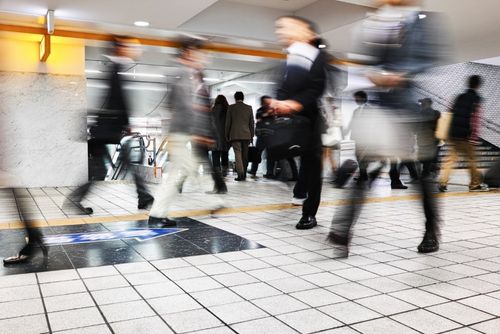
What is piezoelectricity?
What is piezoelectricity?
Revolutionizing the clean energy sector
Revolutionizing the clean energy sector
From floors capable of powering the lighting of a business, to revolving doors at a café that provide electricity, there are already various examples of piezoelectric materials that, sooner than later, could revolutionize the clean energy sector.
Combating climate change has become one of the major battles of the 21st century, and the search for new ways of obtaining clean energy that minimizes our impact on the environment is one of our greatest secret weapons for achieving it. Large corporations are committed to innovation, and the energy and construction sectors are no strangers to a long-distance race in which nature itself provides the most valuable resources on a silver platter.
Nowadays, it's not unusual to see large areas of land dotted with solar panels capable of transforming the sun's rays into electricity, or to come across fields of wind turbines generating wind energy. However, these areas of innovation continue to expand.
What is piezoelectricity?
What is piezoelectricity?
Piezoelectricity is the property that certain crystals have to become electrically polarized when submitted to pressure or vice versa. In other words, it's the capacity of some materials to generate energy when squeezed or pressed.
One example is bioluminescence — the ability of certain marine organisms to naturally produce fluorescent light through a chemical reaction of certain proteins — or osmosis.
Beyond this piezoelectric effect or luminescent bacteria, we can also find innovation in construction materials that seek to be more energy efficient and sustainable. From concrete roofs and walls on buildings that absorb energy and transform it into electricity, to photovoltaic glass on a building that generates energy, there are so many options that open a world of possibilities for driving clean energy.
But for the ordinary person, the world of electricity and, in general, of energy can seem quite complex. However, despite the many questions it may lead to, the concept of piezoelectricity is actually quite interesting. Even though it's true that the academic definition doesn't really begin to explain the topic to someone unfamiliar with the concept, in order to better understand it, we could say the term references the ability of some materials to generate electricity when subjected to mechanical stresses. The process also works inversely, where the actual materials are those that deform when subjected to an electrical field, but if the process is interrupted, they are able to return to their original state.
Possible applications for piezoelectricity
Possible applications for piezoelectricity
For some time now, reality has exceeded our fictional imagination; and what was before unimaginable is now real life. And this is occurring with the application of piezoelectricity, a chapter that has significantly developed in the past few decades and that has provided some of the most ground-breaking results with more ideas that in the future could revolutionize the energy sector.
Can you imagine walking through the supermarket and that the movement of the shopping cart is what generates enough electricity to light up the building? Or that the movement of the wheels on your car over the road lights up the road signs? And what if traffic lights were powered by the passing of pedestrians over crosswalks or around the city? A commitment to innovation is key for optimizing the uses of piezoelectric materials, and the research continues to advance, mainly by studying the possibilities of generating power from flows of traffic or people.
If we consider that the piezoelectric effect allows us to generate electricity for free just from movement — by transforming weight or friction into electricity — it's not hard to imagine the possibilities that infrastructure like the metro, roads, or sidewalks could offer in this sense. But, that's not all. In recent years, there have been a series of examples varying in size that use piezoelectricity on all types of surfaces.
Electricity
Electricity
All about the energy we consume in our homes.

How is electricity generated?
Where does the energy we use come from?


